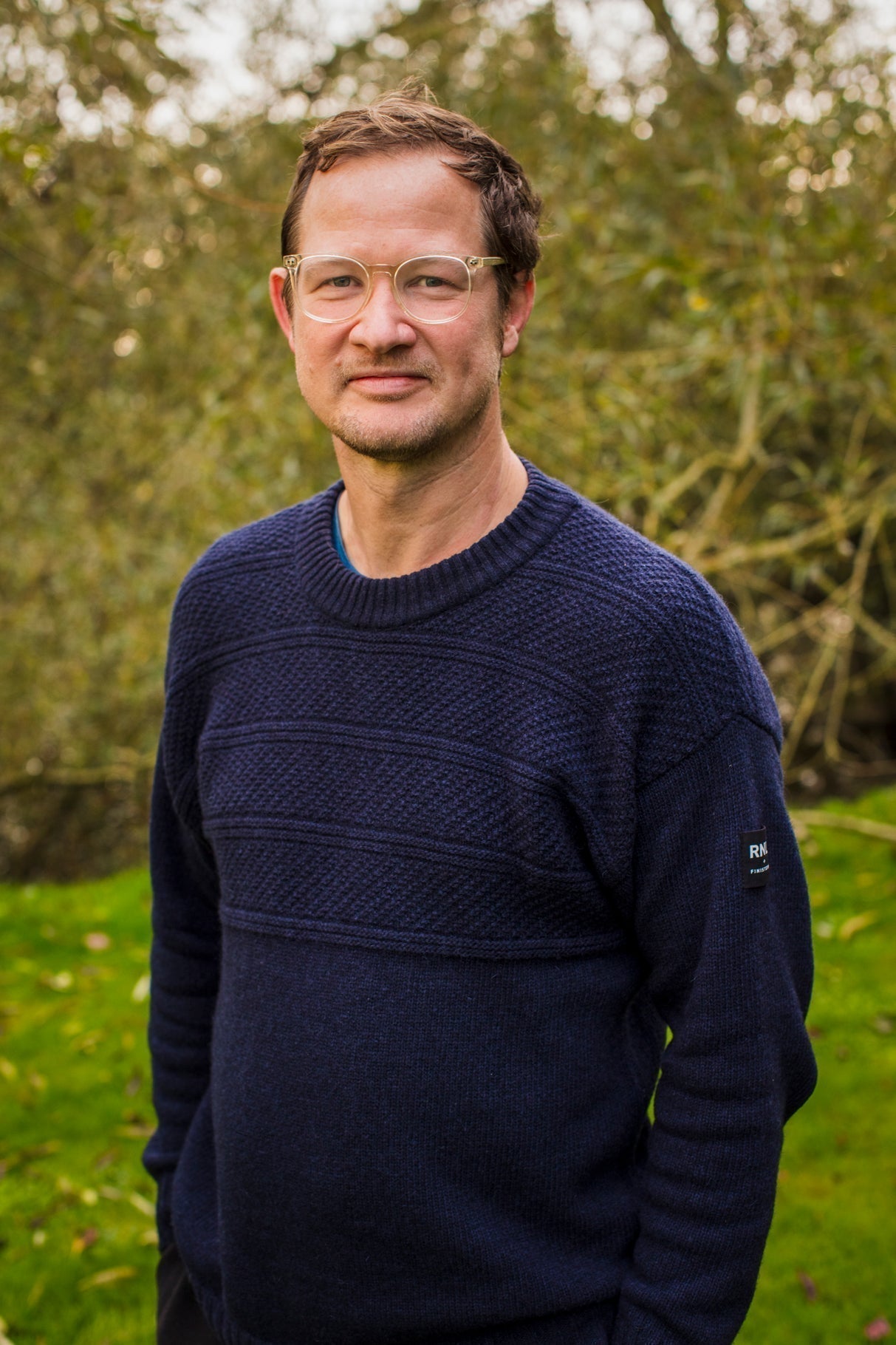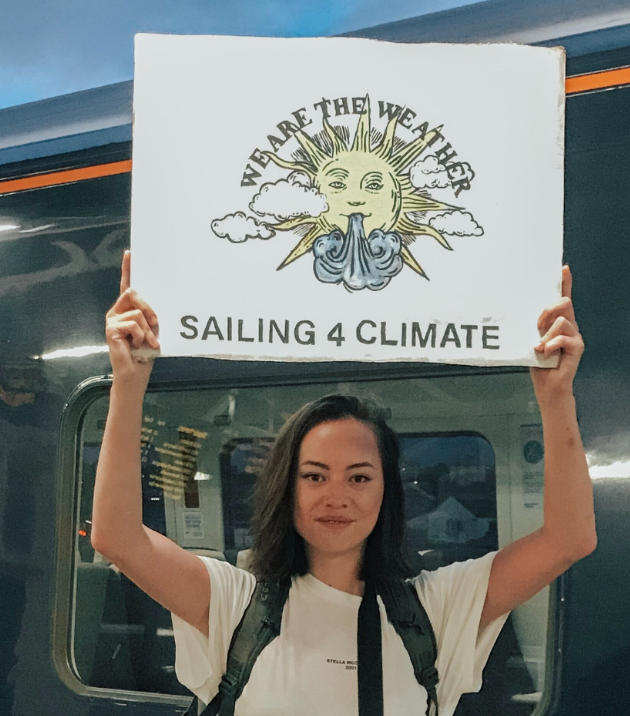At a time when considered design was a widely unchartered territory, Professor Sophie Thomas MA RCA, FCIWM, FRSA set up a design agency for positive impact in 1998. For nearly 30 years she has been setting the tone for conscious design structures, material processes and behaviour change. Through her design agency Thomas.Matthews Ltd, alongside an extensive portfolio of campaigning posts, she has been reshaping attitudes around waste and paving the way for the restructuring of design principles. Not least, she propelled the capacity and understanding of circular design in the material supply chain through her establishment of The Great Recovery, a 4 year programme led by Sophie through the RSA and supported by Innovate UK, and she has since co-founded etsaW Venture studio, focused on accelerated innovation in circularity.
Living and breathing environmental design, Sophie shares with us her knowledge spanning 28 years of working legitimate sustainable principles into the design fabric. Having assisted government organisations and global businesses to define the role of designers in today's take-make-waste landscape, Sophie welcomes us to reconsider how we value products, to include in the context of their components, and contributes to the plea for end-of-life recovery to be the opening act rather than the fading encore of the design brief. She calls for the design world to be turned on its head; for designers to work backwards in order for us to move forwards, while importantly reinforcing the need for a collaborative effort across the entire supply network.
Q1. How does sustainability influence your work and daily life?
It’s a constant. I work within design in material innovation and circularity. I am always thinking about the systems we work within. When I look at something – a pair of shoes, a radio, a bottle of water, a coat – my brain mentally tracks back through the supply (make) chain and forward through the waste chain.
Q2. Have you experienced any pivotal moments that deepened your understanding or commitment to sustainability?
I have always worked in sustainable design. A breakthrough moment came in 2011 when I joined a UK government mission to study the Dutch strategies to ‘design out landfill’. Our hosts took us behind the scenes to look at many ways they were managing waste.
The Dutch introduced a ban on landfill in 1995 when space became an issue. Through this move they began to pioneer new strategies in resource efficiency and since then have been striving ahead into what is now known as a circular economy model for their cities and manufacturing. In fact, it is safe to say that their work trail-blazed the way for the rest of us to follow.
We visited a facility that sorted and recycled fridges and freezers from all over Europe. As I observed the process, I was struck mainly by the dramatic split in the plant itself. High-tech machines crushing and mechanically separating materials in one half, and in the other half the intense manual line with many workers trying to pull out any component that held value or hazard.
Opening the large containers that arrived daily full to the brim with fridges was the start of a long process full of complexity. Every single appliance was different. This meant that every time a disassembler tried manually to get the valuable compressor out from the back before it got crushed, they were faced with a set of challenges, from different sizes and types of screws and materials to fittings and frames blocking their way. It made me want to gather all the fridge designers and stand behind these guys who, just by their actions, would demonstrate the problems inherent in the way we currently design these appliances.
No design brief I have ever seen has required a plan for the end-of-life recovery and it’s not something we are taught. It wasn’t a big step to realise that the same principles and understanding should apply to everything designed. The end-of-life, and how we factor it into design, affects every part of our society. And we all end up paying for it – through its impact on our planet, with the poorest in society who pay the most.
No design brief I have ever seen has required a plan for the end-of-life recovery and it’s not something we are taught. It wasn’t a big step to realise that the same principles and understanding should apply to everything designed. The end-of-life, and how we factor it into design, affects every part of our society. And we all end up paying for it – through its impact on our planet, with the poorest in society who pay the most.
SO, with the fridge recyclers in the forefront of my mind I developed The Great Recovery Programme. A project that gathered designers, stood them behind the recyclers, then collectively worked out how to design better endings.

Q3. Have you encountered any unexpected benefits or opportunities from adopting sustainable practices?
Peace of mind and less eco-anxiety! When we established Thomas.Matthews design agency in 1998 we were pretty much alone when we talked and demonstrated the power of environmentalism in our work. We built the studio on principles and practice of sustainability. It made us question everything and it made the design work harder, but the outcomes were much more interesting. There are now so many more studios practicing like this which is a great thing, but we need it to become mainstream.
Q4. In your view, what’s one simple and doable lifestyle change that could have a meaningful impact on sustainability?
Probably change your diet - whether it's reducing or cutting meat or buying less processed foods. Also keeping things in use for as long as possible, buying less single-use stuff. Our stuff has a huge footprint, and we have very bad habits of throwing things away too soon.
Q5. How do you think circular economy principles — eliminate waste and pollution, circulate products and materials, and support ecosystem regeneration — could be adopted in your industry or in a hobby?
Well, there’s a question I have been working on for over 20 years. Take a look at all the work we did at The Great Recovery.
It started at the current end-of-life of things. I took groups of designers to waste dumps, material recovery facilities, recycling centres, energy from waste plants, anaerobic digestion sites, material labs and even an old tin mine. Over 1000 designers tramped past smelly piles of rotting food, trucks of baled clothing destined for the global south and mountains of electronic toasters and candy floss makers.
Then we worked backwards. We took products off the waste piles and armed with screwdrivers and hammers (similar to the disassembly guys at the fridge recycling facility) we attempted to take things apart. (from shoes to sofas to oil rigs) We wanted to know how easy it would be to disassemble, identify value, and separate materials and reuse. Basically, it wasn’t.
The process threw up a whole load of questions (like - why is there metal in a plastic toothbrush? And how can you get the indium out of old touchscreens economically?)
So, we connected designers to those that might know answers and we quickly opened the discussion out to material experts, chemists, resource recoverers, policy makers, business developers, consultants, logistics managers and others who then become part of our design teams. They helped with answers. They then asked us why we had designed products that were impossible to recover.
We pulled apart manufacturing systems and lots of products to scrutinise the impact of design and then began to co-create possible routes to a more circular economy. We built new business partnerships around these design teams. Innovate UK launched circular business competitions investing 10s of millions in these businesses.
The work we did in these four years demonstrated one thing: designing products for circularity is very difficult in isolation. In summary, every part of the supply network needs to be talking and collaborating, every brief needs to be re-written, every step needs to be re-thought and infrastructure built that is fit for purpose.

Q6. Are there any books, documentaries, or podcasts around sustainability that you feel particularly inspired by and would recommend to others?
I listen to Material Matters by Grant Gibson. He interviews different designers and crafts people – it’s not particularly about sustainability but it's interesting to hear how they all built careers.
I subscribe to MacGuffin The Life of Things magazines. Absolutely fascinating with each edition centred around one thing – the bottle, the chain, the wall, the trousers. They feel like homage to the original Colors magazine.
I love practical books – at the moment I am using Found and Ground – A practical guide to making your own foraged paints, by Caroline Ross
I dip in and out of Rummage by Emily Cockayne. It’s about the history of the things we have reused, recycled and refused to let go.
A must read for me is Design for the Real World by Victor Papanek. Written in 1971 it is the manifesto for responsible design. Others would be Cradle to Cradle by Braungart & McDonough, Rubbish! by Rathjie and Murphy, and Material World by Ed Conway.
Q7. Is there a circular designer or brand you particularly admire and why? This doesn’t have to be in fashion.
I’m currently really inspired by Faith in Nature after hearing Simeon Rose talk. They have put Nature on their board with voting rights. This is something all businesses who created stuff should do.
Q8. What is the most timeless piece in your wardrobe, where did you find it and how long have you had it for?
I have a favourite shirt by Becky Earley that my husband bought for me over 25 years ago. It’s a repurposed bright pink shirt with one of her beautiful Eden plant prints on it. Absolutely gorgeous and it still looks striking and new.
Q9. What do you consider when buying new clothing?
I like things with stories behind them and it’s the same with clothes. I am always popping into charity shops and love a second hand bargain.
Q10. How do you curate your wardrobe?
By colour and mood. I got married in Schiaparelli pink. I wear a lot of black as my base and add flashes of colour. A few years back I did a collab with Ella Doran called ‘Clean Up Camo’. It features images of my ocean plastic collection. I like wearing the scarves and ties.



